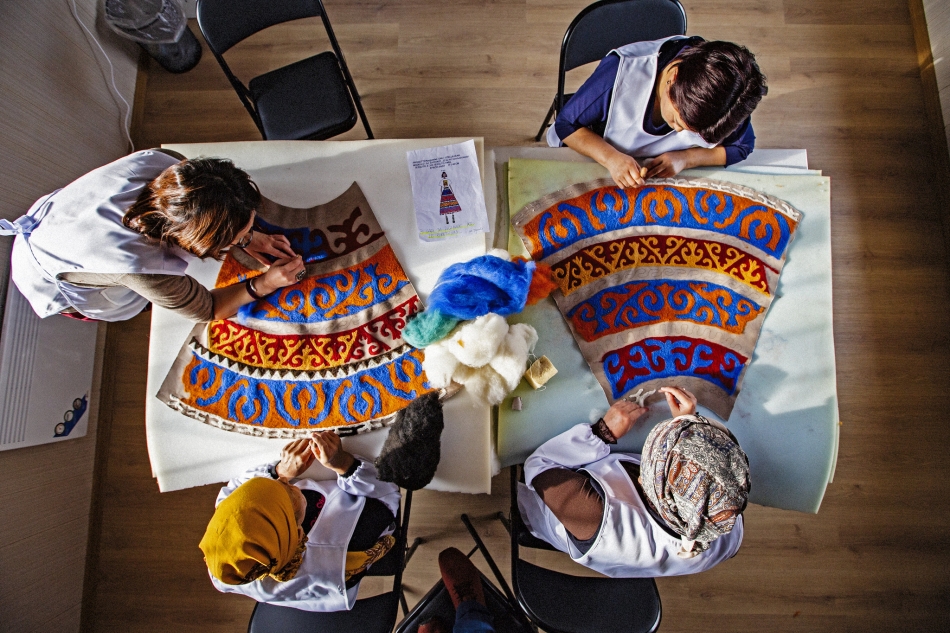Mountain felt fashion: the next big thing?
With the backing of FAO, the MPP initiative currently works across eight countries to strengthen the resilience of mountain peoples, their economies and their environments.

Working with Stella Jean’s designs, women from Topchu produced the felt decorations and added them onto cotton to create more contemporary, everyday wear.
©©FAO/Mirbek Kadraliev
In Kyrgyzstan, where winter temperatures can plunge to -40 degrees Celsius, felt is a vital source of warmth for the local people and has a central role in their culture. It is a traditional material used to decorate yurts and make blankets and clothing. The art of making felt has been passed from one generation to the other, from mother to daughter, for centuries.
“In ancient times, felt was considered a sacred material in our culture. We believed it would protect us from evil spirits and enemy forces, as well as from harsh temperatures,” says 65-year-old Zhamilya Mambetkulova, a teacher in a local school in Barskoon, located in Issyk-Kul, the most northeastern region of Kyrgyzstan. She is an expert in traditional embroidery and design and has been teaching local girls her craft for the last 40 years.
In 2017, she and a group of local women came together to form an artisans’ group called Topchu, working together to produce and sell silk and felt artefacts.
“We use traditional Kyrgyz motifs to create textiles, carpets, clothes, silk scarves and wall hangings adorned with felt. These are then sold at shops and boutiques in the city of Bishkek and sometimes internationally. There are currently about 15 women involved in Topchu,” Zhamilya says.
